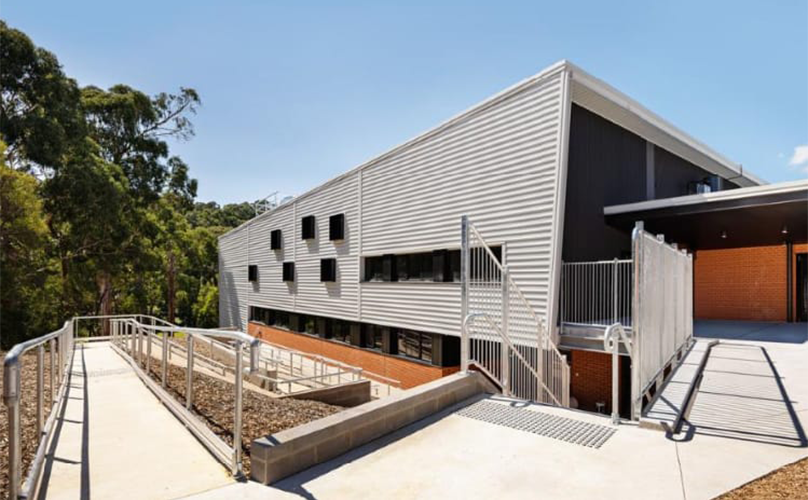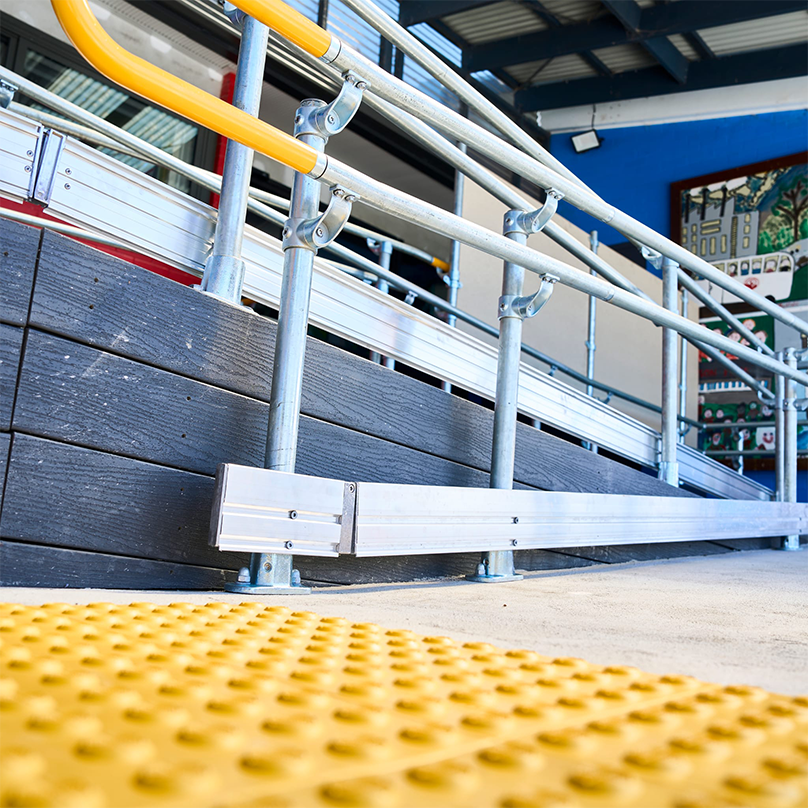Accessibility is needed everywhere, but for people who have not been impacted by a mobility challenge, whether permanent or temporary, it is not really something that is kept front of mind. Sure, there are checkboxes to tick and standards to achieve, but when it comes to accessibility it is often designed for compliance and not for the end user. Dean Homicki from Staebl Academy in Victoria knows these frustrations well, and after an interesting journey from jewellery designer to creating sustainable and durable stainless steel tactile indicators, has made it his mission to create a larger conversation about people and their changing needs in accessibility via his online platform Staebl Academy. We sat down with Dean to talk about all things ‘accessibility’ and how we can challenge thinking when it comes to design, compliance, and the end-user experience.
“Every design decision you make has a consequence for people“

When asked if there is a need to rethink accessibility, Dean proposes a unique way to look at the question: “Should professionals charged with a duty of care go over and above what is required of them in the Australian National Construction Code (NCC), which also references Australian Standards?”
Dean goes on to explain that the answer is not so simple, as the minimum requirements may not suit the end user “It is important to point out that professionals who are the duty holders of ensuring that building regulations meet compliance are only authorised to achieve this purpose. They are not required to achieve a particular conformance with an Australian Standard above the minimum requirement as stipulated in State and Territory jurisdictions. It is complex. But should they care about why, what, and who their decisions impact? That is a matter of leadership.”
Homicki believes that part of achieving that solution comes down to alignment between all parties involved revolving around essential questions; Who is the project for? How will it be used? Who will access it? Why is it needed, and how will it be repurposed at the end of its useful life? “Great design goes unnoticed. Bad design reminds us why we needed to ask better questions and assemble the right team. We get stuck with what they did or did not care about.”
“Great design goes unnoticed. Bad design reminds us why we needed to ask better questions“

Dean explains that there can be an absence of knowledge and experience when it comes to both design and implementation that can lead to unintended obstacles. There is a lax attitude towards holding people accountable for poor and non-conforming work practices which suggests that the appropriate attitude and mindset are the key to creating inclusive environments.
During the past few years, Dean has noticed a shift in awareness of accessibility, but this does not necessarily mean there is a better understanding around the subject. “If your life has been touched by someone living with a permanent, partial or temporary mobility challenge, or if your physical circumstances have changed recently, you will become acutely aware of the inadequacies of new and refurbished premises.”
This lack of understanding has led to isolation for many people living with disabilities, “Australian culture is still ‘you and them’ rather than ‘we and us’ as one community that is diverse, different, and genuinely inclusive in how we move in and around the built environment.”
Dean says that his most significant and valuable lesson when designing both Tactiles and Staebl Academy was to take responsibility for the contributions he is making to people living with mobility and orientation disabilities. “I’ve learnt that caring about my work and who I do it for is not about being right and correct according to Standards and Codes while being legally obligated, but rather about who will benefit from taking responsibility for the accomplishment of work done well for the people who will rely upon it.”
Since establishing Staebl Academy, Homicki has grown a following by actively engaging with people living with disabilities and creating a positive discussion around accessibility. He states that the most common complaint he hears is about inconsistency “There is so much inconsistency in the design, application, and product performance that many people who rely on mobility and orientation for guidance in and around a built environment have lost trust in Accessibility. The Senate Inquiry into Non-conforming Building Products tabled its final report on 23 April 2020 (Master Builders Australia, Submission 125, p. 26): There is a common lack of guidance on how to use a building product in practice and no information about the best evidence or way to educate a consumer on how a product should be used”. This inspired his mission behind Staebl Academy to be a part of the change to provide guidance to the people who design, construct, or manage a built environment. “Fast access to information is critical. Reliable, sourced, and transparent information delivery is also critical in our Environmental, Social and Governance (ESG) operations.”

“There is so much inconsistency in the design, application and product application that many…have lost trust…”
Staebl Academy has been well received by Architects and Project Managers looking to bridge the gap between compliance and the user experience, with many requesting blended learning modules and CPD points to be recognised by the Australian Institute of Architects. In the future, Staebl Academy will see further growth with weekly webinars and more discussion and perspectives on both orientation and mobility in the built environment. Let’s challenge how we view accessibility and work together to create a more inclusive and accessible community for all. It is a long road ahead, but by actively listening to the people who rely on what we design, as well as discussing the end-user experience compared to the tick of compliance, we can improve the lives of many people living with disabilities. Are you ready to join that conversation?
